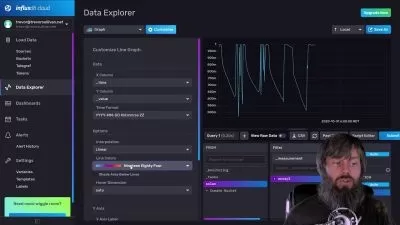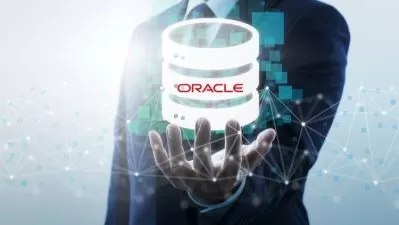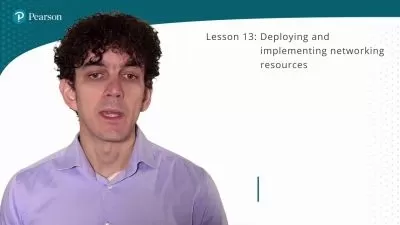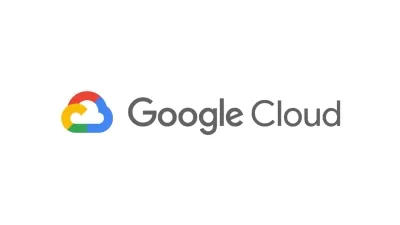Google Cloud Professional Database Engineer Exam Prep
Dan Sullivan,Daniel Sullivan
3:50:51
Description
Pass the Google Cloud Professional Database Engineer Exam
What You'll Learn?
- Choose appropriate types of database for use cases from relational, document, wide-column, and analytical databases
- Manage database users, security, and networking access
- Implement database migrations and change data capture solutions
- Optimized database performance through modeling, partitioning, clustering, and replicas
- Manage data using exports, imports, and backups
- Monitor databases and troubleshoot problems
Who is this for?
More details
DescriptionDatabases are the foundation of many of the applications and services that we use every day. Keeping them up and running is the responsibility of database engineers. In this course, you will learn essential skills and hear hard-learned lessons about designing, deploying, securing, and maintaining highly scalable and highly available databases.Â
By the end of the course, you'll be ready to take the Google Cloud Professional Database Engineer Exam and take on the responsibilities of a database engineer working in Google Cloud.
The course begins with an introduction to relational databases and working with Cloud SQL, a regional, managed database service provided by Google Cloud. You will learn:
When to use Cloud SQL
How to create a Cloud SQLÂ database instance
Managing users
Creating, managing, and cloning databases
Connecting securely to your databases
Best practices for importing, exporting, and backing up your databases
We'll also cover database maintenance and how to migrate a self-managed database to Cloud SQL. But we don't stop with Cloud SQL. Google Cloud offers AlloyDB, a scalable PostreSQL implementation that is designed to support both online transaction processing and analytical workloads. You will also learn about Cloud Spanner, the managed, globally scalable relational database offered by Google Cloud.
In addition to relational databases, we dig into the details of BigQuery, a petabyte scale data warehouse, and analytics service. You'll learn how to use BigQuery's console to navigate datasets, organize data using partitioning and clustering, and control access to data in BigQuery.
Bigtable and Cloud Firestore are two managed NoSQL databases available in Google Cloud. In this course, you'll see how to create Bigtable databases, add clusters to a Bigtable instance, and design multidimensional schemas that are highly performant in Bigtable. You'll also learn about Cloud Firestore, a document database, that provides flexible schemas while also offering indexing and a query language that makes it an ideal choice for a database backend for many services.
In addition to knowing about different kinds of databases and when to use them, database engineers have to maintain and troubleshoot databases. This course will help you learn how to estimate the size of databases, monitor databases as well as configure security and networking for databases. You'll also learn about essential data management practices including change data capture (CDC) using Datastream and database migration using Database Migration Service.
Database engineers are in demand because they understand how to build, deploy, and manage critical information infrastructure. Â
Google Cloud has developed the Professional Cloud Database Engineer certification to distinguish database engineers with the necessary skills to operate high-performance databases in production environments in Google Cloud.  Join us in this course to advance your career as a certified Professional Database Engineer.
Who this course is for:
- Database administrators
- Database engineers
- Data modelers
- Database developers
- Cloud engineers
- Data engineers
- Data analysts
- Application developers
- Software engineers
Databases are the foundation of many of the applications and services that we use every day. Keeping them up and running is the responsibility of database engineers. In this course, you will learn essential skills and hear hard-learned lessons about designing, deploying, securing, and maintaining highly scalable and highly available databases.Â
By the end of the course, you'll be ready to take the Google Cloud Professional Database Engineer Exam and take on the responsibilities of a database engineer working in Google Cloud.
The course begins with an introduction to relational databases and working with Cloud SQL, a regional, managed database service provided by Google Cloud. You will learn:
When to use Cloud SQL
How to create a Cloud SQLÂ database instance
Managing users
Creating, managing, and cloning databases
Connecting securely to your databases
Best practices for importing, exporting, and backing up your databases
We'll also cover database maintenance and how to migrate a self-managed database to Cloud SQL. But we don't stop with Cloud SQL. Google Cloud offers AlloyDB, a scalable PostreSQL implementation that is designed to support both online transaction processing and analytical workloads. You will also learn about Cloud Spanner, the managed, globally scalable relational database offered by Google Cloud.
In addition to relational databases, we dig into the details of BigQuery, a petabyte scale data warehouse, and analytics service. You'll learn how to use BigQuery's console to navigate datasets, organize data using partitioning and clustering, and control access to data in BigQuery.
Bigtable and Cloud Firestore are two managed NoSQL databases available in Google Cloud. In this course, you'll see how to create Bigtable databases, add clusters to a Bigtable instance, and design multidimensional schemas that are highly performant in Bigtable. You'll also learn about Cloud Firestore, a document database, that provides flexible schemas while also offering indexing and a query language that makes it an ideal choice for a database backend for many services.
In addition to knowing about different kinds of databases and when to use them, database engineers have to maintain and troubleshoot databases. This course will help you learn how to estimate the size of databases, monitor databases as well as configure security and networking for databases. You'll also learn about essential data management practices including change data capture (CDC) using Datastream and database migration using Database Migration Service.
Database engineers are in demand because they understand how to build, deploy, and manage critical information infrastructure. Â
Google Cloud has developed the Professional Cloud Database Engineer certification to distinguish database engineers with the necessary skills to operate high-performance databases in production environments in Google Cloud.  Join us in this course to advance your career as a certified Professional Database Engineer.
Who this course is for:
- Database administrators
- Database engineers
- Data modelers
- Database developers
- Cloud engineers
- Data engineers
- Data analysts
- Application developers
- Software engineers
User Reviews
Rating
Dan Sullivan
Instructor's CoursesDaniel Sullivan
Instructor's Courses
Udemy
View courses Udemy- language english
- Training sessions 64
- duration 3:50:51
- Release Date 2022/12/24

















